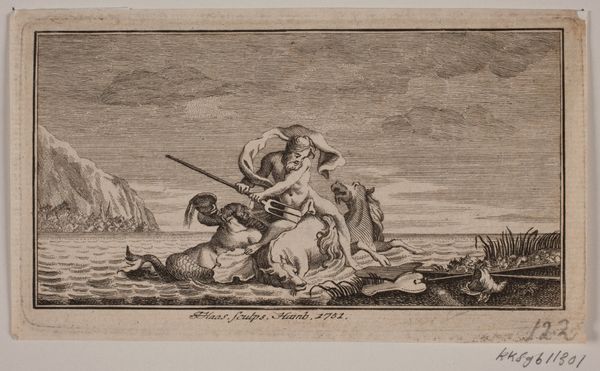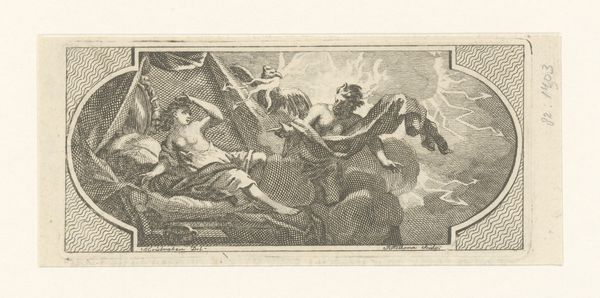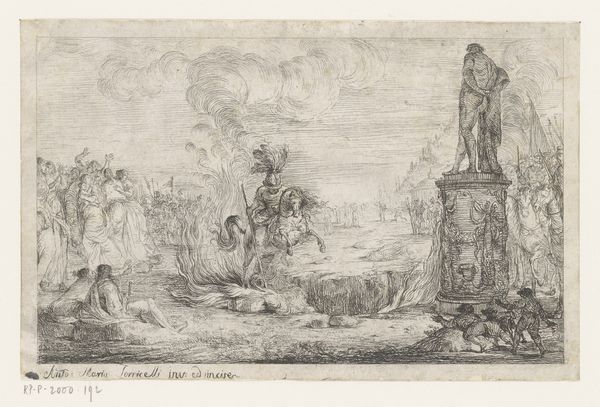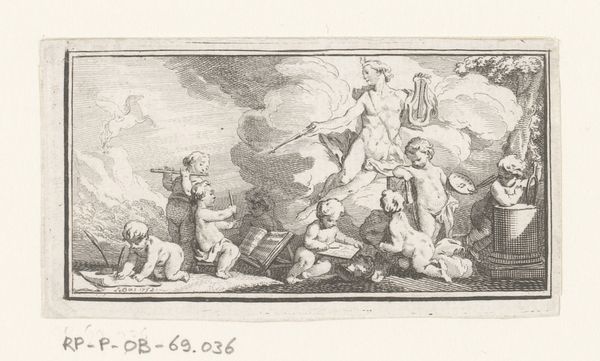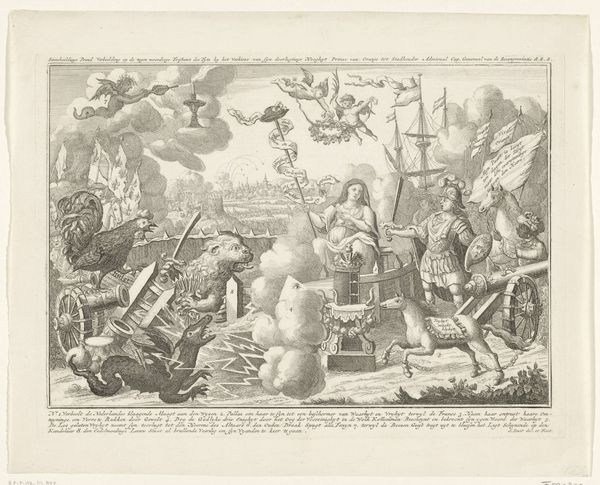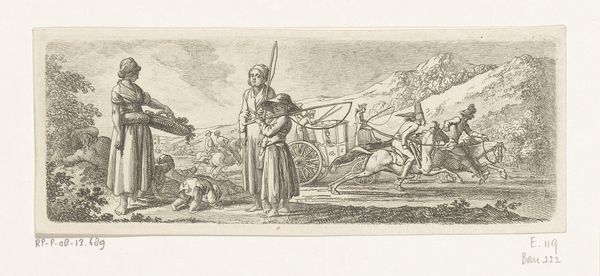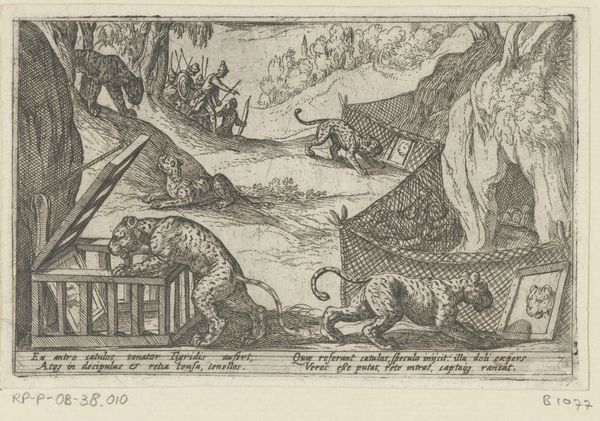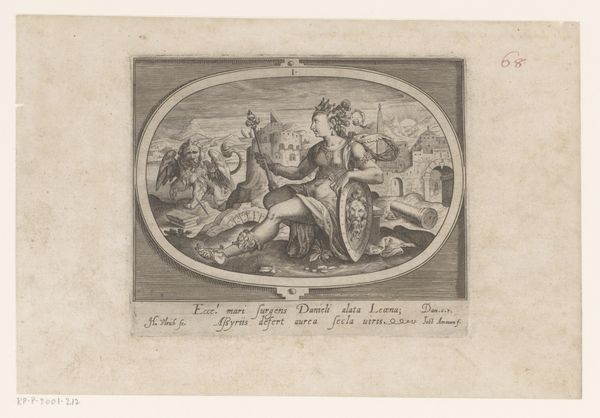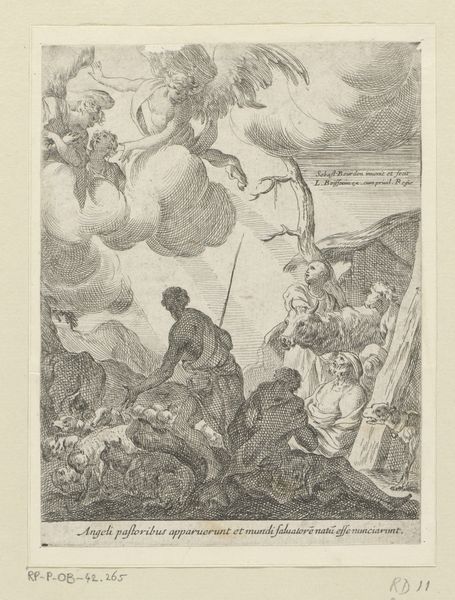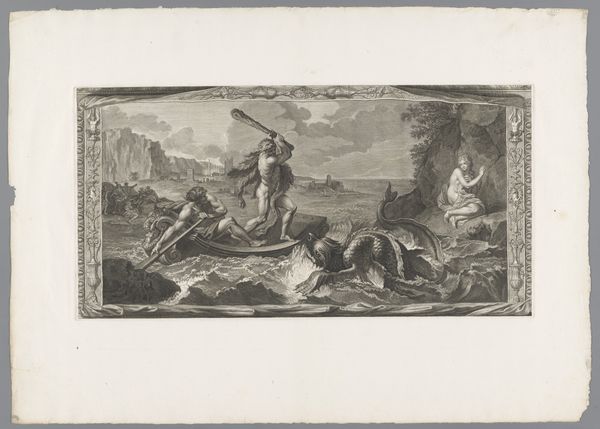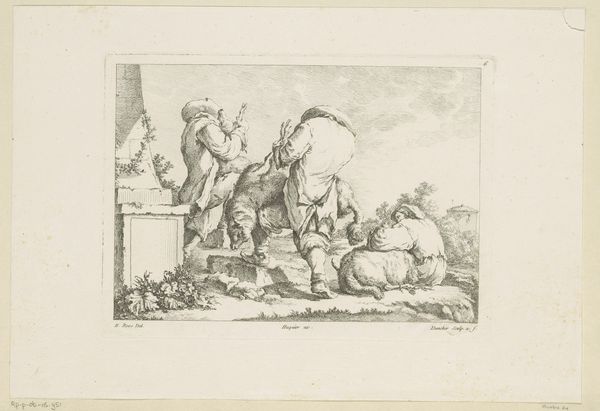
print, engraving
#
aged paper
#
baroque
#
animal
# print
#
old engraving style
#
classical-realism
#
figuration
#
personal sketchbook
#
line
#
history-painting
#
engraving
Dimensions: height 73 mm, width 159 mm
Copyright: Rijks Museum: Open Domain
Editor: Here we have "Death of the Firstborn in Egypt," an engraving from 1743, currently housed in the Rijksmuseum. The artist is anonymous. It's striking how much is happening; it feels almost chaotic with such a high level of detail. What do you see in this piece? Curator: This image pulsates with echoes of cultural trauma. The fallen figures obviously allude to loss, and it resonates through time and cultures, yet note the avenging angel poised above. It doesn't present just individual tragedies, but a sweeping act of divine wrath, etched deeply within the collective consciousness. Editor: So, it’s less about personal grief and more about... collective memory? Curator: Precisely. Consider the classical elements like the broken columns and the poses of lamentation: they tie this specific event in Egyptian history to a broader understanding of justice, retribution, and divine intervention that permeates much Western art and literature. Can you see any other visual elements suggesting specific meaning? Editor: Well, the menorah at the top left seems quite deliberately placed... representing, I assume, the Israelites spared from this plague. Curator: Yes, a potent symbol indeed, standing in contrast to the surrounding chaos and destruction. Notice also the beam of light shining down upon the menorah. These aren’t merely aesthetic choices; they are loaded with theological weight, reinforcing the idea of divine favor and historical narrative. Editor: That definitely puts a new spin on how I view it. It’s like the image is both a snapshot of a single event and a reminder of larger, recurring themes within cultural memory. Curator: Indeed. Visual culture has forever carried significant, complex messages beyond just its surface depictions.
Comments
No comments
Be the first to comment and join the conversation on the ultimate creative platform.
